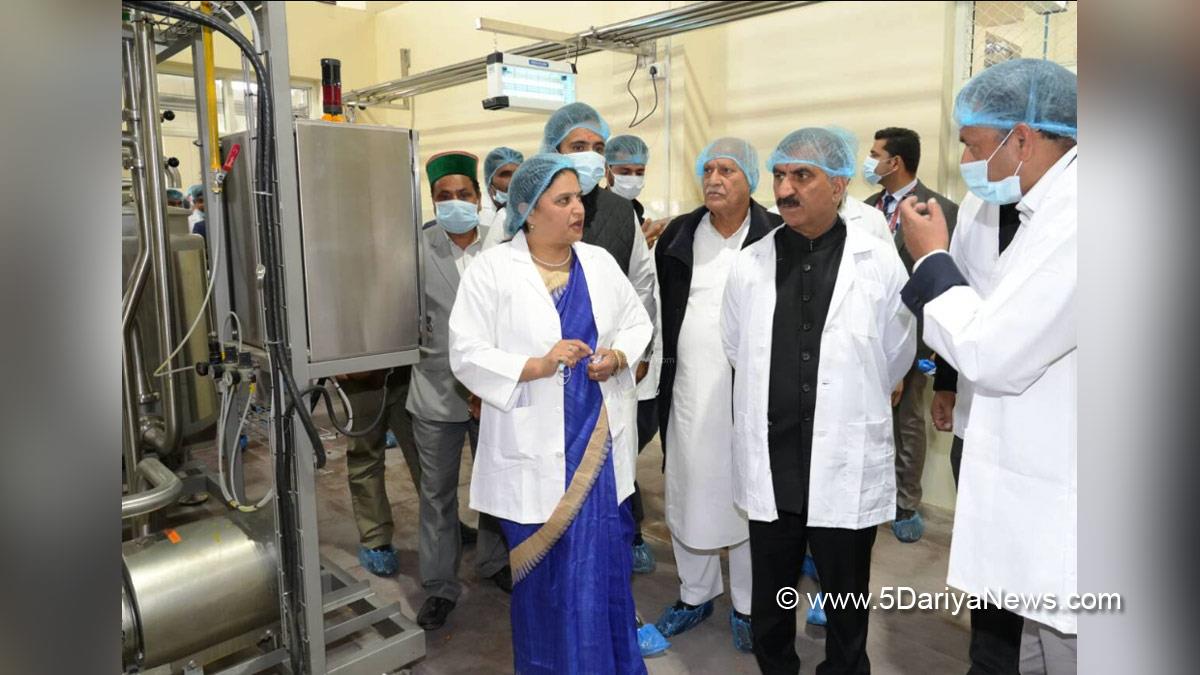Government strengthens rural economy with dairy reforms during past two and a half years

Himachal Pradesh has become the first state in India to offer Minimum Support Price (MSP) on milk, which has set a new benchmark in the country’s dairy sector. This bold and revolutionary move reflects a strong commitment of the present state government to support livestock farmers and enhance rural livelihoods.
Over the past two and a half years, the government has introduced several impactful reforms towards empowering dairy farmers and strengthening the co-operative institutions, besides building a resilient rural economy. As of today, the Government is procuring cow milk from approximately 38,400 farmers, collecting an average of 2.25 lakh litres milk daily at a support price of Rs. 51 per litre, based on quality standards.
Additionally, about 1,482 buffalo rearers contribute 7,800 litres of milk per day, which is purchased at Rs. 61 per litre. These rates provide assured income to livestock rearers and reflect a significant improvement over previous procurement mechanisms.
To ease logistical challenges, especially in hilly and remote regions, the government is also providing Rs. 2 per litre transport subsidy for dairy farmers. It is expected to benefit a large number of producers. It is improving farmer’s access to markets and also reducing transportation costs for marginal farmers.
One of the most ambitious undertakings of the state is the Him Ganga Yojana, which aims to transform dairy farming at the grassroots level. Under the first phase of the Him Ganga Yojana, a dedicated committee has been formed to visit villages and establish milk producer co-operative societies at the grassroots level.
As part of this initiative, 268 new dairy cooperatives have been formed in Hamirpur and Kangra districts. Out of these, 11 societies in Hamirpur and 99 in Kangra have already been officially registered. In Hamirpur, out of 46 newly formed societies, 20 are women-led dairy co-operatives which show the focus of the state government on empowering rural women.
In Kangra, a total of 222 dairy co-operatives have been established. So far, 5,166 farmers have been linked to these societies, ensuring their direct participation in organized milk production and marketing. In another pioneering initiative, the government has launched a pilot project for goat milk procurement.
Under this initiative, the government is offering Rs. 70 per litre to goat rearers. Presently, 100 litres of milk is being purchased per day from 15 goat rearers. To further incentivize the functioning of milk cooperative societies, the government has doubled the transport subsidy from Rs 1.50 to Rs 3 per litre, and societies are drawing benefit from this provision.
The initiative covers all milk cooperative societies registered under the Societies Registration Act, 1860 and the Himachal Pradesh Cooperative Societies Act, 1968. The estimated annual expenditure for this is around rupees six crore, a figure likely to rise as more societies join the scheme.
Chief Minister Thakur Sukhvinder Singh Sukhu said that the dairy reforms of the present state government go beyond mere production figures. It is about creating a sustainable ecosystem that values farmers, ensures quality and fosters inclusive growth.
He said that with a clear focus on improving farm incomes, empowering women and strengthening co-operative structures, the state government has taken significant steps toward rural transformation. He said that as the state continues its journey towards becoming a self-reliant rural economy, the dairy sector stands as a shining example of what committed governance and grassroots engagement can achieve.
Himachal’s model not only ensures economic dignity for its farmers but also inspires other states to re-imagine their rural development strategies.

Comments are closed.